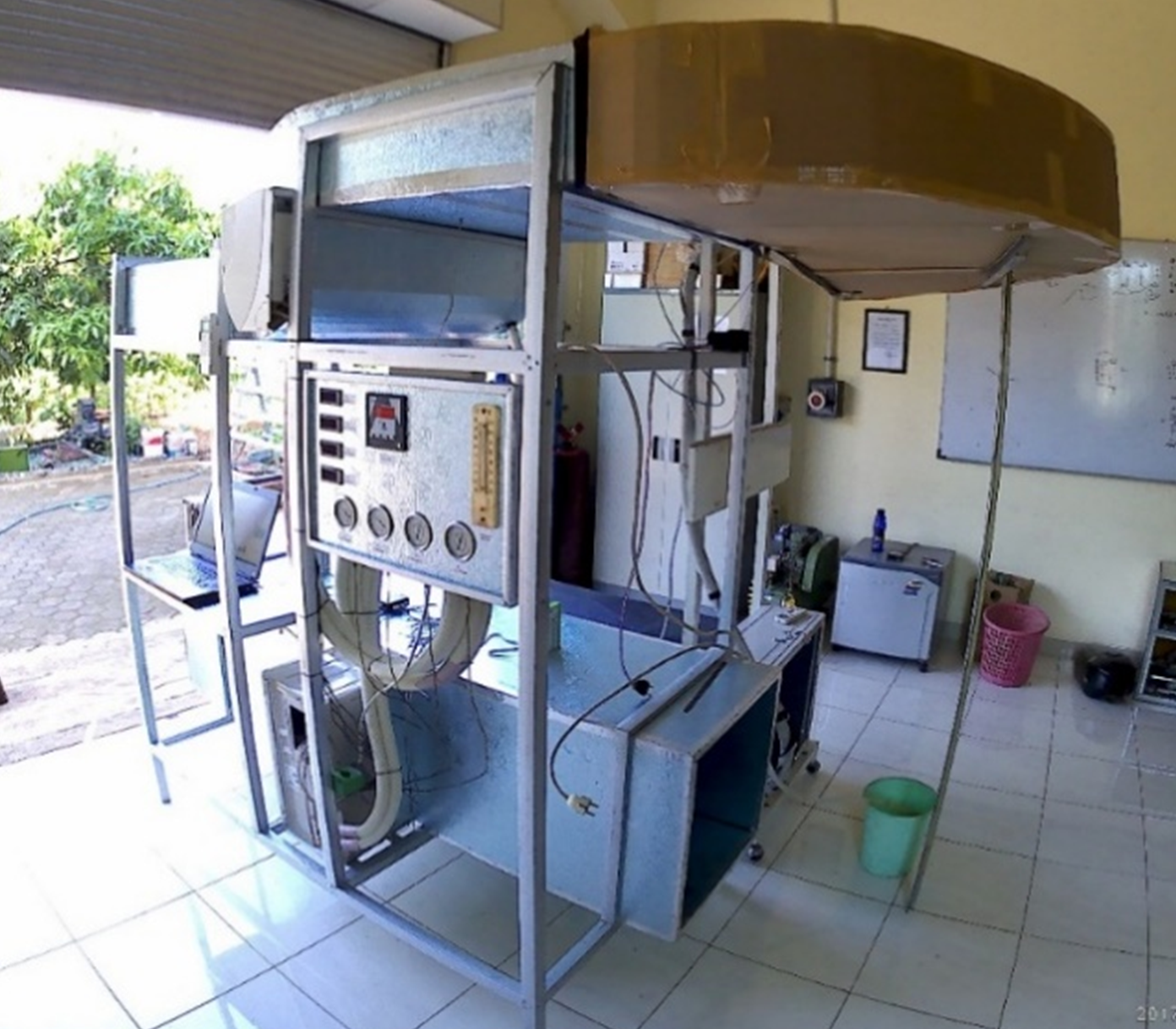Studi Eksperimental Unjuk Kerja AC Split Menggunakan R22, Propana 99,5% dan Propana 95,5%
DOI:
https://doi.org/10.36499/jim.v21i1.13773Keywords:
R22, Propana,COP, efisiensi energi, refrigeran alternative.Abstract
Penelitian ini bertujuan untuk mengevaluasi dan membandingkan unjuk kerja sistem pendingin udara (AC split) yang menggunakan tiga jenis refrigeran berbeda, yaitu R22 (refrigeran konvensional), propana dengan kemurnian 99,5%, dan propana dengan kemurnian 95,5%. Studi ini dilakukan secara eksperimental dengan menggunakan sistem AC split kapasitas 1 PK dalam kondisi operasi standar. Parameter utama yang dianalisis meliputi tekanan kerja, temperatur kondensor dan evaporator, daya listrik yang dikonsumsi, koefisien performa (COP), serta efisiensi energi sistem secara keseluruhan. Hasil penelitian menunjukkan bahwa propana 99,5% memberikan performa termal yang mendekati R22 dan memiliki efisiensi energi yang lebih baik, disertai dengan penurunan konsumsi daya sebesar ±10%. Sementara itu, propana 95,5% menunjukkan performa yang relatif lebih rendah dibandingkan propana 99,5%, meskipun tetap berada dalam batas operasional yang aman. COP Propana 99.5% dengan pengisian 50% paling tinggi, namun pada Propana 99.5% dengan massa 40% paling stabil dan memiliki nilai yang tinggi, kemudian disusul oleh Propana 95% dengan Massa 60%. Sedangkan Propana 95% dengan pengisian 30%, 40% dan 50% mempunyai COP yang lebih rendah. Penggunaan propana sebagai alternatif refrigeran ramah lingkungan menunjukkan potensi besar dalam mengurangi dampak pemanasan global akibat refrigeran konvensional. Dengan demikian, propana terutama dengan kemurnian tinggi dapat dipertimbangkan sebagai alternatif pengganti R22 dalam sistem pendingin AC split, dengan catatan perlunya pengujian lanjutan terhadap aspek keselamatan dan kompatibilitas material.
References
Cho, H., Ryu, C., Kim, Y., & Kim, H. Y. (2005). Effects of refrigerant charge amount on the performance of a transcritical CO2 heat pump. International Journal of Refrigeration, 28(8), 1266–1273. https://doi.org/10.1016/j.ijrefrig.2005.09.011
Devotta, S., Padalkar, A. S., & Sane, N. K. (2005). Performance assessment of HC-290 as a drop-in substitute to HCFC-22 in a window air conditioner. International Journal of Refrigeration, 28(4), 594–604. https://doi.org/10.1016/j.ijrefrig.2004.09.013
Fatouh, M., & El Kafafy, M. (2006). Assessment of propane/commercial butane mixtures as possible alternatives to R134a in domestic refrigerators. Energy Conversion and Management, 47(15–16), 2644–2658. https://doi.org/10.1016/j.enconman.2005.10.018
K., B. F. T., & Tanaka, I. R. (2019). Experimental study of small wall room air conditioner for R-22 retrofitted with R290 95.5%. AIP Conference Proceedings, 2062, 020019. https://doi.org/10.1063/1.5086566
Kwon, C., Kim, M. S., Choi, Y., & Kim, M. S. (2017). Performance evaluation of a vapor injection heat pump system for electric vehicles. International Journal of Refrigeration, 74, 138–150. https://doi.org/10.1016/j.ijrefrig.2016.10.004
Ridwan Tanaka, I., Fajar, B., Suryo Utomo, T., Yohana, E., & Mustaqim. (2018). Experimental Study Performance R-22 AC Split Retrofitted With Propane. MATEC Web of Conferences, 159, 02021. https://doi.org/10.1051/matecconf/201815902021
Stocker, T. (Ed.). (2014). Climate change 2013: The physical science basis: Working Group I contribution to the Fifth assessment report of the Intergovernmental Panel on Climate Change. Cambridge University Press.
Zhou, G., & Zhang, Y. (2010). Performance of a split-type air conditioner matched with coiled adiabatic capillary tubes using HCFC22 and HC290. Applied Energy, 87(5), 1522–1528. https://doi.org/10.1016/j.apenergy.2009.10.005

Downloads
Published
How to Cite
Issue
Section
License

This work is licensed under a Creative Commons Attribution 4.0 International License.
Authors who publish with this journal agree to the following terms:
The journal allow the authors to hold the copyright without restrictions and allow the authors to retain publishing rights without restrictions.
Authors retain copyright and grant the journal right of first publication with the work simultaneously licensed under a Creative Commons Attribution License that allows others to share the work with an acknowledgement of the work's authorship and initial publication in this journal.
Authors are able to enter into separate, additional contractual arrangements for the non-exclusive distribution of the journal's published version of the work (e.g., post it to an institutional repository or publish it in a book), with an acknowledgement of its initial publication in this journal.
Authors are permitted and encouraged to post their work online (e.g., in institutional repositories or on their website) prior to and during the submission process, as it can lead to productive exchanges, as well as earlier and greater citation of published work (See The Effect of Open Access).

This work is licensed under a Creative Commons Attribution 4.0 International License.








